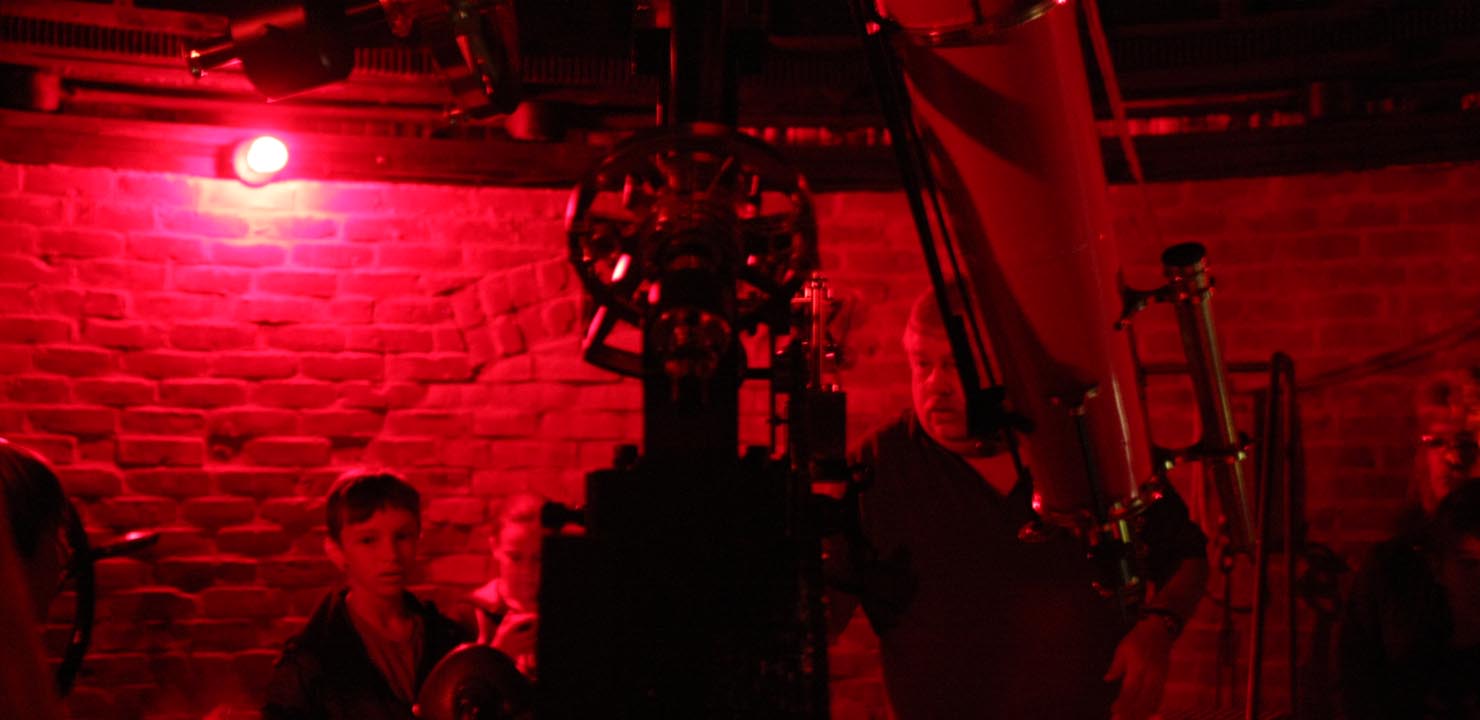
Clear skies give way to poor conditions, obscuring all but Mars & Saturn
by Dave Huestis & Jim Hendrickson
All day Saturday, May 12, the skies were a deep blue with not a cloud to be seen. Those of us who were going to volunteer for the Public Observing program were excited. For eight consecutive weeks the inclement weather had forced the cancellation of our Saturday evening observing sessions. Finally we were going to have a great night! And besides that, Donna Gaumond’s school group from Exeter, which had been rescheduled four or five (we lost count) times, was on deck and ready to observe.
Unbelievable. Before the sun sank below the horizon some clouds could be seen to the west. As I drove Jim Hendrickson and Alex Bergemann to Seagrave we could see them advancing. Though it was still mid to late twilight when we arrived at Seagrave, ten or so cars were already in the parking lot. Bob Napier had already given some of the early arrivals a brief tour of the museum in the anteroom.
Alex and Jim accompanied me to the dome. We quickly opened up. Several folks followed us up and watched us complete the opening procedures. It was still a little too bright out to start observing. Venus was below the tree-line (from the vantage point of the Clark) to the west northwest, and those clouds we had spotted earlier had begun to cover the sky over Seagrave.
This gave me an opportunity to present the history of Seagrave, his telescope, the observatory, and Skyscrapers. It was finally dark enough to locate Mars, which I allowed junior member Madison to acquire. We started out with a 25 mm eyepiece, providing a magnification of 107. Though Mars was about 98,000,000 miles distant, one could still discern a couple of dark features. After everyone got a look at Mars under low power, I cranked it up to 148. The detail was a little more apparent.
The clouds that had blocked Saturn a half hour earlier had now thinned out and Madison was able to acquire this magnificent ringed-world. We kept the 18 mm eyepiece in. The drive tracked well to keep Saturn centered in the field of view. The high thin clouds helped to stabilize the image. The rings, tilted 14 degrees from the horizontal were beautiful. And Titan was close enough to Saturn to be seen in the same field of view. Several awesomes were exclaimed by our young visitors. Saturn was about 821,000,000 miles from the Earth.
Our guests also visited the two telescopes that were in operation out back, but the observations there were also limited to Mars and Saturn due to the clouds.
Regardless, between Donna’s school group and the other public who showed up at Seagrave, Skyscrapers treated about 45 folks to the wonderful images our telescopes can provide. And you can bet they will be back when clear skies will provide even more grand views of the heavens.








